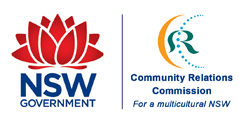Australia & Asia

The Lu family on the deck of ‘Tu Do’, Darwin,
November 1977. Courtesy National Library of Australia
Refugees are people who leave their own country because of hardship or persecution. Since World War II many refugees have come to Australia. The first refugees came from countries in Eastern Europe which had been taken over by the Soviet Union after World War II. Later refugees came from countries such as Czechoslovakia, Hungary, Greece and Chile, fleeing civil wars and persecution. In the 1970s and 1980s refugees came from Asian countries like Vietnam and Kampuchea to escape revolution and persecution. Between 1945 and 1970 the Australian Government’s Immigration Policy sought migrants from Europe. In the 1970s, this policy changed and people from other countries were encouraged to come to Australia. Migrants have come from Asia, the Middle East and South America as well as Europe. Unlike migrants who choose to leave their own country to move to another country, refugees flee their homeland because they are afraid to stay there. Refugees were allowed to come to Australia because Australia had signed a United Nations agreement to accept refugees. Australia wanted to help people in Asia and other parts of the world who had been made homeless by war, revolutions or persecution by governments.
In the late 1970s when communists gained controlled of Vietnam, thousands of people who were afraid of the government left in small boats. In 1978, the first boats reached Australia at Darwin. Suddenly Australians were made aware of the problems of refugees. By the end of 1979, 2011 Vietnamese ‘boat people’ (as they had been dubbed by the media), had survived the dangerous journey from Vietnam. Many more died trying. In 1979 Australian immigration officers selected most refugees from refugee camps in Thailand, Indonesia and Malaysia. Those with relatives in Australia, useful skills and who could speak English were selected, as well as a small number of students and diplomats.
In 1982, the Vietnamese Government agreed to let refugees leave Vietnam without persecution, freeing people to come to Australia to be with their families who had fled earlier. By 1985, 70,000 refugees from South East Asia, mostly Vietnam, had settled in Australia. The arrival of Vietnamese refugees forced changes in migration policy around the world, especially in Australia, which was pressured by ASEAN to accept more refugees after 1978. Very few refugees were accepted by Australia at first. The arrival of Vietnamese refugees signalled the end of the infamous White Australia Policy in 1978, and was accompanied by much argument and debate. By the late 1980s there were fewer arrivals, as it became more difficult to leave Vietnam and several countries reduced the numbers of people allowed to stay. As camps closed from 1996 onwards, forced repatriations to Vietnam have occurred. In Australia, most people arriving from Vietnam have been accepted through family reunion programs. Others have migrated from the north – again a difficult decision – often for education and work prospects.

